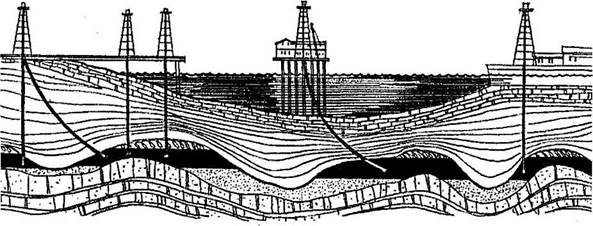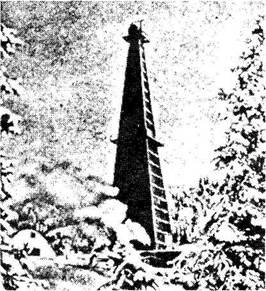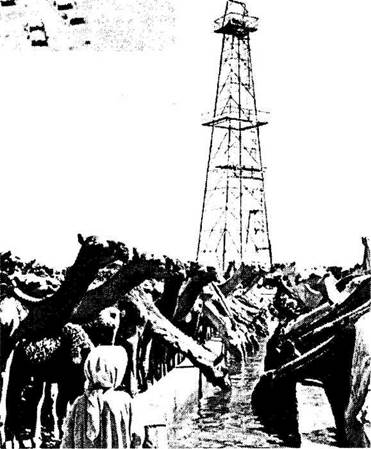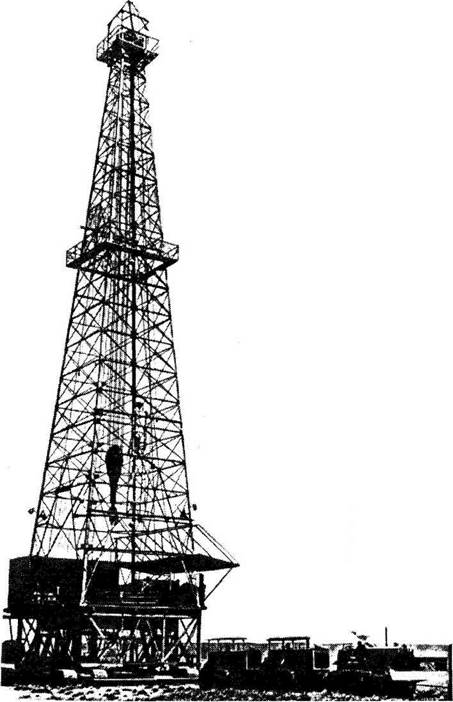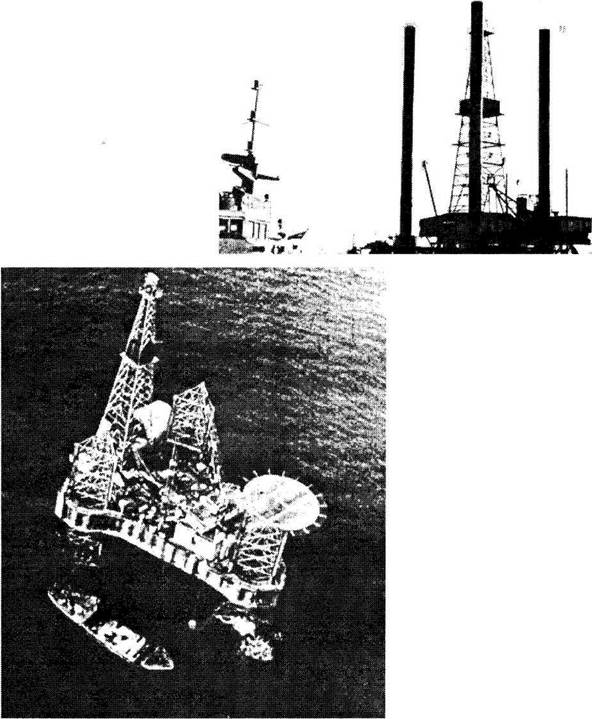OFFSHORE AND DIRECTIONAL DRILLING
curve. By using this directional drilling, it is possible to set the rig up on shore and curve the hole out to offshore oil sands. When the field is so far from land that this is impossible, another method is used. Great steel platforms are built on tall steel legs driven into the sea bottom. These platforms, high above the stormiest waves, are large enough to hold all the equipment.
All supplies, as well as crude oil, when it is found, must be transported to shore in boats and barges. Sometimes it is possible to lay an underwater pipeline through which crude oil is carried from field to shore.
Drilling for Oil
Oil may be found under the plains of the U.S.A. or Canada, where a lone derrock overlooks the wide fields right, or in Alaska where the derrick, at right, had to be covered against the icy cold. This oil field in the Turkmenian Republic, the former U.S.S.R.. seems to be on a sea. but it is realK a sea ol sand.
Chapter Three
have a hard time arranging to drill in such places, for people do not like to have their well-cared-for property dug up, or live too close to an oil well. These old "desert ships", not a bit bothered by the newfangled steel towers around them, drink water from the same well used a century ago when they, and only they, made up the great caravans that proudly carried all things across the desert wasteland. Usually when one derrick appears on the landscape, many more soon follow, and the "strike" soon becomes an oil field. In places far from cities and towns, like the Arabian desert, at left, camps grow up around the oil wells, and workers live right on the spot. But not all oil strikes are on the outskirts of towns, in the desert or on farmland. In California, U.S.A., for example, oil has been found in the middle of cities, and under private estates and golf courses. Oil companies
Drilling for Oil
Chapter Three
Drilling for Oil
Chapter Three
|

